June 11, 2021
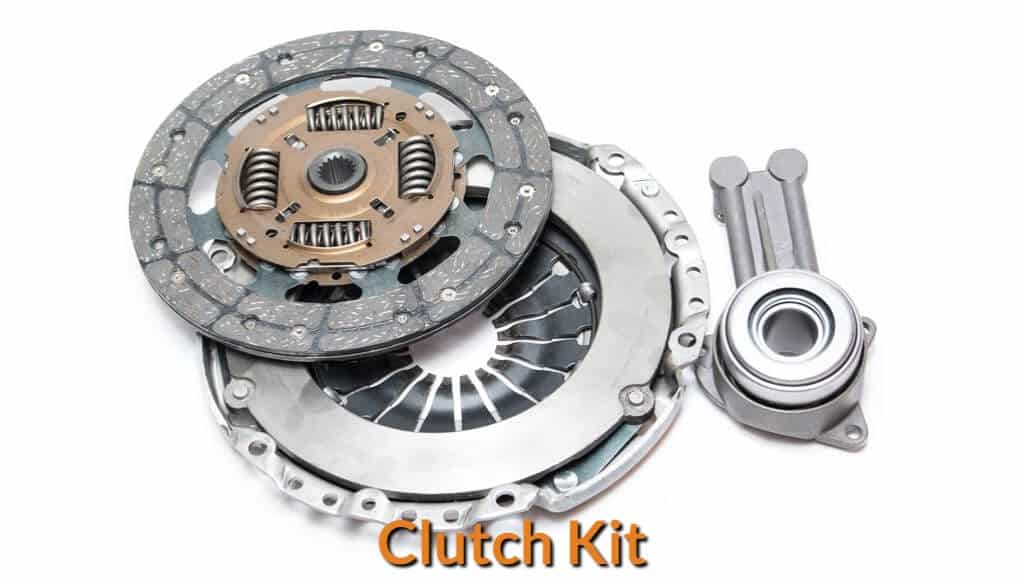
The clutch is needed in a car for it to change gears. It is a crucial aspect of driving. It enables the driver to switch from one gear to another, and this process can be very smooth, provided the clutch is in good condition. It is responsible for the smooth switching between gears. The clutch is an essential mechanic part of your car. Therefore, what are the components of a clutch kit?
3 Major Parts That Come in a Clutch kit & Plus 1 Additional Tool
The major parts of a clutch kit are the Clutch plates, pressure plates, and the release bearings. They are usually sold together and happen to be quite affordable when compared to the cost of getting replacement pieces parts by parts. Some clutch kits also come with a pilot bearing. This depends mainly on the specs of the car and suggestions from the manufacturer.
Sandwiched in-between the flywheel and the input shaft of a manual transmission are the three major parts of a clutch. The flywheel and the clutch plate (which is part of the three main parts of a clutch kit) come together to do an excellent job in propelling the car forward or backward.
1) Clutch Disc/Plate
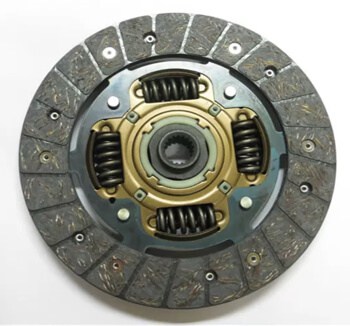
The clutch disc or clutch plate is a major component of a clutch system, and it is found in-between the pressure plate and the flywheel. The pressure plate acts as a clamp and holds the clutch disc tightly. The sides of a clutch disc have friction surfaces, and this is responsible for the disc to be to as friction disc.
This device allows the transfer of power from the engine to the transmission and vice versa. They are designed to support friction thanks to their asbestos-lined surfaces. The clutch plates used in larger automobiles or high-performance cars are usually made of carbon or ceramic material. This is done to meet the friction demand in these vehicles.
The pressure plate is also known as the cover facing assembly. There are two main types around, and they are the spring pressure plate and the diaphragm pressure plate. However, the diaphragm pressure plate is relatively more popular in vehicles.
2) Clutch Pressure Plate
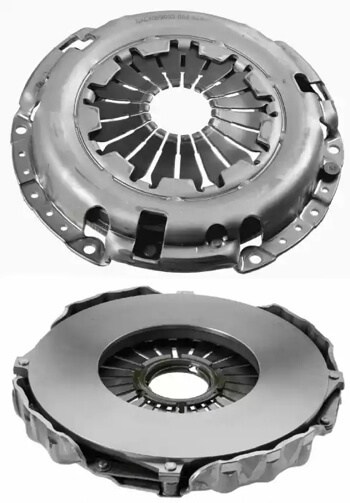
The clutch pressure plate is metallic, and an essential feature of the Clutch pressure plate is its springs, which it gyrates with the flywheel. The springs help to hold the clutch disc firmly against the flywheel when the clutch is in use.
The clutch pressure plate assembled of several parts, which are clutch cover, diaphragm spring and the pressure plate itself. The pressure plate is controlled by the spring which is attached inside the cover. It is to holding the clutch assembly against the flywheel by applying pressure to the clutch plate.
3) Throwout Bearing
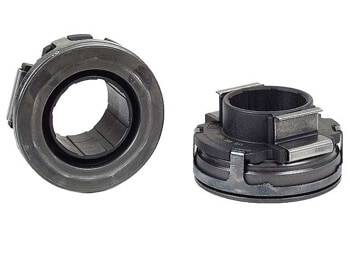
The throwout bearing, which is also known as the clutch release bearing, serves as the part that connects the clutch and the pressure plate. Whenever the clutch is depressed, the release bearing separates the flywheel from the pressure plate and clutch disc. This is done to disengage the drivetrain from the engine. However, when the clutch pedal is released, the release bearing allows the pressure plate to come back to work, which in turn pushes the clutch disc against the flywheel. The throwout bearing also succumbs to wear, and in worst cases, makes shrieking sounds when put to work from the clutch pedal.
Alignment Tool (Additional Parts)
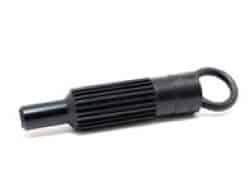
Most clutch sets have an alignment tool included in the package. They can be reused more than once. However, the alignment tool you can use in your clutch must have the same amount of spline. When you apply the alignment tool in pilot bearing, also ensure that the alignment tool suits the bearing, in the same manner, the pilot shaft fits it in the transmission. To reduce your work of finding the alignment tool that meets the clutch’s requirement, most manufacturers include the right one that suits the clutch.
The alignment tool helps to make sure your repair and clutch installation is done properly. It’s very useful to keep the pressure plate and clutch disc in the correct alignment and position while you were installing, fitting, and bolting the clutch set into the transmission.
What is a Clutch Kit?
A clutch kit is an assemblage of manual transmission parts that are either bought as a unit or assembled piece by piece. Clutch kits that are purchased as a unit mainly consist of a clutch disc, release bearing, and a pressure plate. In some cases, a pilot bearing is also added, and some positioning tools. The release bearing in some manual transmissions is an essential extension of the slave cylinder; therefore, most times, they are included in the kit. The clutch kits that are easily found around are usually made to have similar specifications to the original package that came with the car. However, it is possible to find a kit with high-performance specs or one designed for racing.
The main reason for having a clutch kit is to readily make available the parts that need replacement in the clutch of a car that uses a manual transmission. No matter how you drive our car carefully, the clutch discs are one of the first parts of the clutch that will need replacement. Release bearing and other related parts such as the pressure plate are likely to follow suit. Although they do not wear at the same rate as the rest of the clutch system, however, due to the complex nature of removing a transmission, they are also replaced.
The following parts are found in a standard clutch kit –
- Cover Facing Assembly/ Pressure Plate
- Clutch Disc/Clutch plate
- Clutch Release Bearing/Throwout bearing
Apart from the parts found in a clutch kit, there are other parts of the clutch system and the transmission in general that can also be replaced. Parts such as the flywheel, which holds the clutch disc thanks to a pressure plate is removed during a replacement exercise and is later put back into the clutch system. However, if the flywheel is faulty or deteriorated, it is ideal to change it entirely. Also, the clutch cylinders, both the master and slave, are usually replaced as well. This is because when these cylinders develop issues, it can lead to the clutch disc failing faster than expected.
Other Types of Clutch Kits
Performance-Oriented Clutch Kits
There are clutch kits that are designed to meet the high-performance driving demands such as racing, towing, etc. we have clutch kits that satisfy those needs.
They come in handy when you need a horsepower boost, or you are in the business of moving or towing heavy loads. The pressure plates in performance-oriented kits generally handle more than the one in the average clutch kit. Other boosts you are likely to get here are clutch discs made out of different materials, for example, carbon or Kevlar.
Clutch Parts or a Clutch Kit, Which One Should You Purchase?
In most cases, it is ideal to go for a clutch kit, if your aim is to replace your clutch.
After setting the full clutch kit properly, you don’t have to worry that one part of the clutch will wear off soon. However, if you purchase part of the clutch and install it, you don’t know how soon another part will wear off, leading to a premature clutch failure.
The components you are likely to find in a clutch kit dependent on the current need. The lowest component you are going to find in a clutch kit is the pressure plate and clutch disc. If you notice a short, unpleasant sound anytime you touch the clutch pedal; then, it is your throwout bearing that may need changing. Also, the pilot bearing, which is located in a part of the flywheel and helps the input shaft of the transmission to gyrate slower than the engine in terms of RPM, can fail. This bearing is called the pilot bearing, and they will sometimes fail, also. Therefore, a standard kit should contain the following: A clutch disc, pressure plate, clutch release (throwout) bearing, and pilot bearing.
Other Important Things You Must Know
Inspecting the Flywheel
You should note that a standard clutch kit does not include a flywheel. Therefore, you will have to buy it separately.
Changing the flywheel of some cars can be expensive as they require two flywheels, thanks to their dual mass design. However, at Exedy Australia, cases like this are covered as you are offered the opportunity of changing the dual-mass flywheel with a single-mass flywheel.
You can still make do with your flywheel if it shows little signs of wearing buy resurfacing it. However, if the wear of the flywheel is high, you have no choice but to replace it, and the earlier, the better.
